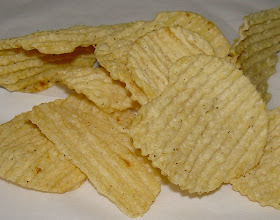If you ask Japanese people who have been to the U.S. about the food, they will always say at least one, if not all of the following:
- the portions are very big
- the food is too oily/fatty
- the food is too sweet
These observations are true from a certain perspective. Certainly the food portions in the U.S. are very big, but I have always believed that this is because we're not really expecting to scarf it all down at once, but rather that part of the restaurant culture in the U.S. is providing value by allowing you to take whatever you don't eat home in a
doggy bag. You can feel a little better about paying more for someone else to cook if you get two meals out of it. Also, food in general is substantially cheaper in the U.S. so a bigger part of the restaurant's expense is labor and location-related. They can afford to pile on the food.
I can also agree that some food is sweeter and some food is oilier in the U.S. compared to Japan. That being said, some food in Japan is sweeter and some food is oilier than in than in the U.S. The latter perspective isn't one Japanese people tend to have because they view the foods which are sweeter or fattier from a Western perspective as being standard rather than unusual.
I've noted in multiple reviews that Japanese chocolate is richer than American chocolate. It is sometimes higher in calories despite being less sweet in many cases because of the higher fat content. This mainly affects the texture, but it also affects the taste to some extent. Chocolate isn't the only thing which tends to contain more fat and less sugar. Baked goods in particular are often loaded with more fat and have less sugar. This is why the muffins and cakes tend to be dry compared to Western versions.
The added fat doesn't stop with sweets though. Things like soup, particularly
ramen, have a lot more oil floating around in them than their Western counterparts. There's also
tonkatsu (breaded fried pork cutlets), Japanese curry and tempura (breaded fried vegetables or seafood) which are pretty well-known parts of Japanese cuisine. French fries and fried chicken get singled out as Western atrocities because they are deep fried, but it's not like the Japanese don't have deep frying in their food culture as well. What is worse, some of the
tonkatsu is designed to be extra juicy by layering thin fatty pork rather than simply using one thicker bit of it.
Personally, I have no problem with people having fatty foods in their food culture. In fact, I tend to think that fat in general has been
villified far too much. Consumption of fat makes you feel fuller than carbohydrates. It's only an issue when you eat too much or are eating damaged fats. The main reason I point out the fact that Japanese food has plenty of fat is that most people fail to recognize how prevalent it is in Japanese processed food and in food preparations outside of sushi and
sashimi.
In regards to sugar, it is fair to say that most sweets are less sweet in Japan. You can't really say the same for some other foods though. Salted snack foods often have sugar or
Sucralose added to them so you get a unique combination of salt and sweetness in various corn snacks in many cases. Bread products also often taste very sweet. In particular, various rolls and buns which are ostensibly designed for sandwiches are strangely sweet. It's not uncommon to see a package of dinner rolls or long buns that look like they'd suit a hot dog with an illustration picturing ham and lettuce artfully tucked into the buns. If you buy such buns thinking you'll make yourself a nice sandwich, you'll find that hey make appallingly bad sandwiches unless you like your ham or tuna salad with sugar sprinkled on it.
At one point in time, there even used to be Japanese toothpaste that contained sugar. I doubt that it is still on the market as I'm hoping someone figured out that sugar in toothpaste rather defeated the purpose. I was warned about said dental application when I first arrived in Japan and encouraged to use imported toothpaste to prevent cavities forming as a result of exercising good dental hygiene.
Finally, from an American viewpoint, you tend to notice that Japanese food on the whole is very salty. It's not only the use of soy sauce, but also the fact that a lot of simple food preparation comes with a good dose of salt. I had my gall bladder removed and was served apples with salt on them (and wasn't allowed to leave the hospital until I ate them as well as the rice I was served). It's also common to eat cucumbers encrusted with salt in the summer and to sprinkle salt on your watermelon.
Tastes are a matter of, well, taste. You get used to what you grow up with and everything else seems weird. Americans like American food and Japanese like Japanese food, and criticism comes from the deviations from the expected norm. The health problems in America tend to come from eating too much or eating imbalanced diets rather than from an overabundance of sugary and fatty foods in the cuisine relative to the presence of such foods in other cultures. Japan gets a good rap because the people are healthier, but they eat a much more balanced diet and have built-in portion control as well as run to the doctor frequently for the tiniest of medical problems (so small problems are caught and corrected early). It's not that they don't have food with lots of fat and sugar, it just isn't a problem for them given other factors




















































